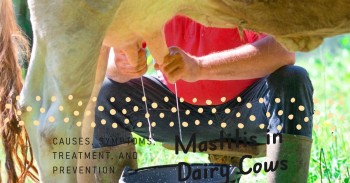🐑 TETANUS: A
Serious Threat to Humans and Animals! 🐐💥
Tetanus, also known as
"lockjaw," is a well-known disease caused by the bacterium
Clostridium tetani. This anaerobic, Gram-positive, spore-forming rod can be
found in soil and animal feces. The spores of this bacterium are highly
resilient and can survive in the soil for many years. When the spores encounter
a suitable anaerobic environment, such as deep puncture wounds or necrotic
tissue, they can multiply and release a potent neurotoxin called tetanospasmin.
This neurotoxin affects the nervous system, leading to the characteristic
symptoms of tetanus: muscular rigidity, hyperesthesia (increased sensitivity to
stimuli), and convulsions.
🌍 Epidemiology:
Tetanus can affect various
animals, including goats. The factors that make other livestock susceptible to
tetanus also apply to goats. Goats can contract tetanus through puncture
wounds, obstetrical interventions, routine procedures like disbudding,
dehorning, tattooing, castration, and hoof trimming, dog bites, fights among
bucks, or even by penetration of the oral mucosa by fibrous plant awns.
🔍 Clinical Findings:
The incubation period of tetanus
varies, depending on the location of the wound or injury and its distance from
the central nervous system (CNS). The tetanospasmin toxin must reach the spinal
cord before clinical signs become apparent. The disease can progress rapidly,
with early signs including an anxious expression, a stiff gait, and mild bloat.
Affected animals may assume a base-wide or "sawhorse" stance, with
stiffened ears and tail. They exhibit reluctance to move, have difficulty
opening their mouth, and may experience constipation. Food accumulation in the
buccal space and excessive salivation can occur. Prolapse of the third eyelid
is also possible. As the disease progresses, animals become hyperesthetic,
reacting strongly to touch or loud noise by stiffening and collapsing to the
ground. Seizures may follow, leading to permanent recumbency (inability to
stand). Rigid extension of all limbs and opisthotonos (arching of the back due
to muscle spasms) are common. Affected animals may experience rumen tympany
(excessive gas in the rumen), and convulsions can occur even with minimal
disturbances. Once recumbent, death usually occurs within twenty-four to
thirty-six hours.
🔬 Diagnosis:
Diagnosing tetanus is primarily
based on recognizing the characteristic clinical syndrome. However, during the
development of the disease, other differential diagnoses should be considered.
Conditions like laminitis and nutritional muscular dystrophy can cause a stilted
or stiff gait similar to early tetanus but without bloat or other associated
signs. Bacterial meningitis can cause hyperesthesia and trismus. In the
terminal stages of tetanus, when recumbency, opisthotonos, and convulsions are
present, it is essential to differentiate from polioencephalomalacia, which is
common in goats. Strychnine poisoning and hypomagnesemic tetany should also be
ruled out, although these are less common in goats.
💊 Treatment:
The prognosis for tetanus is
always guarded, but early identification and intervention can improve the
chances of recovery. The treatment goals are to inhibit further toxin
production, neutralize existing unbound toxin, alleviate the effects of bound
toxin, and provide necessary supportive care.
✔️ Administering systemic
penicillin at the appropriate dosage helps inhibit bacterial growth and toxin
release. Procaine penicillin G, given
at a minimum dose of 25,000 IU/kg bw IM
(intramuscularly) BID (twice a day) for two to three days, is recommended.
Afterward, the treatment can be reduced to once a day. Other antibiotics with a
Gram-positive spectrum, such as ampicillin and amoxicillin, may also be used at
high, frequent doses.
🩸
The site of bacterial proliferation should be thoroughly examined, and if possible,
the wound or infection site should be exposed to air, cleaned, flushed with
hydrogen peroxide, and infiltrated with penicillin. Tetanus antitoxin can be
infiltrated into the area before the cleaning process begins to reduce the
chance of additional toxin absorption during tissue manipulation.
💉 Parenteral
administration of tetanus antitoxin, given intravenously at a dose of 10,000 to
15,000 units every twelve hours for at least the first twenty-four hours, is
essential for neutralizing any unbound toxin. Prolonged administration may be
required if the source of bacterial proliferation has not been identified and
treated.
💊 To alleviate the
clinical effects of bound toxin, anticonvulsants, tranquilizers, and muscle
relaxants can be administered. Diazepam, at a dosage of 0.5 to 1.5 mg/kg IV
(intravenously), is effective as an anticonvulsant. Acepromazine, given at a
dose of 0.2 mg/kg IM (intramuscularly), works well as a tranquilizer for
tetanic animals. Methocarbamol, administered at a dose of 22 mg/kg IV, is a
useful muscle relaxant.
🌿 Guaifenesin, when
given intravenously as a 5% solution, can be used to reduce muscle spasms.
However, caution must be exercised not to overdose the animal, as it acts by
blocking nerve transmission at the level of the interneurons. Other drugs
recommended as muscle relaxants, although not specifically reported for use in
goats, include dantrolene sodium, mephenesin, and magnesium sulfate.
🏥 Supportive care
involves relocating the affected animal to a quiet and darkened environment.
Intravenous fluids containing dextrose and electrolytes are essential to
counter dehydration and lack of feed intake. An enema may be administered to
relieve constipation and provide comfort to the animal.
🚫 Prevention:
Tetanus can be effectively
prevented by improving hygiene practices and utilizing immunoprophylaxis.
Prompt and thorough cleaning of all wounds is crucial. For young kids with
unknown immune status, routine procedures such as disbudding and castration should
be accompanied by an injection of 150 to 250 units of antitoxin. In cases where
the immune status of adult goats is uncertain, administering 500 to 750 units
of antitoxin when treating wounds, dystocias, and other potential sources of
tetanus is advisable.
Remember, staying vigilant and
taking necessary preventive measures can go a long way in protecting both
humans and animals from this serious and potentially fatal disease. 🚫💪
📝
Disclaimer: The information provided here is for educational purposes
only and should not be used as a substitute for professional veterinary advice.
Always consult with a qualified veterinarian for diagnosis, treatment, and
preventive strategies tailored to your specific circumstances.


















